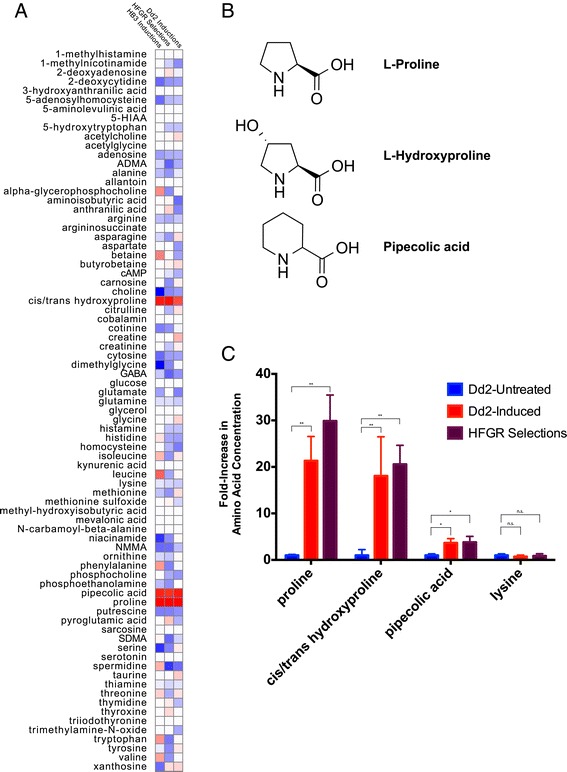Figure 5.

Profiling of 115 polar metabolites reveals that proline and proline-like non-proteogenic amino acids are uniquely enriched in halofuginone short-term induced and long-term selected parasites. (A) Of the 115 polar metabolites measured, only pipecolic acid and cis/trans-hydroxyproline concentrations are highly correlated with cytosolic proline concentrations in short-term induced Dd2 parasites, short-term induced HB3 parasites, and long-term selected Dd2 lines HFGRI, II, and III. Each column represents an independent dataset analyzed: HB3 untreated and induced parasites; Dd2 untreated and HFGRII and HFGRIII parasites; and also Dd2 untreated and induced parasites. The full metabolite profile is provided in Additional file 14. (B) The three amino acids all contain cyclic secondary amines and carboxylate groups. The addition of a hydroxyl and replacement of a 5-member for a 6-cyclic amine result in the slightly different chemical and physical properties between proline and hydroxyproline and pipecolic acid, respectively. (C) Cytosolic proline, cis/trans-hydroxyproline, and pipecolic acid are elevated in halofuginone-resistant parasites compared with an untreated Dd2 line. The cytosolic concentration of the pipecolic acid precursor lysine is unaffected. The heat map in (A) represents the correlation coefficients (r-values) between cytosolic concentrations of metabolites with that of proline in three collections of WT and modified parasites. High correlation (r = 1) is represented by red while low correlation (r = -1) is represented by blue. Statistical significance in (C) was determined with multiple unpaired t-tests using the Sidak-Bonferroni method, with alpha = 0.05. Significant results are indicated by asterisks: single asterisks indicate uncorrected P < 10-7 and double asterisks indicates uncorrected P < 10-10. Error bars denote standard deviation.
